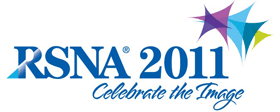
Abstract Archives of the RSNA, 2011
Roni Shreter MD, Presenter: Consultant, Medic Vision Ltd
Radu Rozenberg MD, Abstract Co-Author: Nothing to Disclose
Ayelet Eran MD, Abstract Co-Author: Consultant, Orsan Medical Technologies Ltd
Reuven Shreiber MD, Abstract Co-Author: Employee, Algotec Limited
Azaria Simonovich MD, Abstract Co-Author: Nothing to Disclose
Doron Fischer BSc, MD, Abstract Co-Author: Nothing to Disclose
Aaron Kulater, Abstract Co-Author: Nothing to Disclose
Ahuva Engel MD, Abstract Co-Author: Nothing to Disclose
Initial evaluation of an image interpretation application optimized for the tablet computer technology. The aim of the study was to determine the diagnostic accuracy of interpreting brain CT examinations with the use of tablet technology.
We identified 134 consecutive brain CT examinations preformed in our ED during the course of one week. These exams were reviewed by 3 experienced Neuroradiologists using iPad tablet computer (Apple) and a web based image viewer optimized for tablet technology (Light-Viewer, Carestream Health). The radiologists reviewed on average 34 different exams each and filled a worksheet containing questions regarding acute, sub acute and chronic findings as well as questions about the reading time and radiologist’s confidence in the findings. All major and minor findings were then compared to the original interpretations which were preformed on a regular PACS workstation. Discrepancies between findings were review by all 3 radiologists and the final diagnosis was determined by consensus. The study received Medical Ethics Committee approval and exemption from informed consent.
Eighty two exams were found to be normal (61%). Acute findings included 7 acute intracranial hemorrhages (5%), 4 new fractures without hemorrhage (3%), 5 acute strokes (4%) and 3 new tumors (2%). Thirty three patients had mentionable chronic ischemic changes including old strokes (25%). All acute findings were correctly interpreted by the radiologists using the tablet computer. Some differences in minor and incidental findings existed but were considered not relevant to the immediate patient management. Reading time using iPad was found to be longer when compared to reading time using PACS workstation.
Mobile wireless devices such as iPad can provide on-call attending physicians the ability to perform accurate image interpretation of ED brain CT, thus enabling them to offer their professional advice, from any location where wireless communication can be achieved.
CT is an essential decision making tool in emergency radiology. Mobile tablet computer technology may enable reviewing exams from anywhere at any time. This study assesses its feasibility.
Shreter, R,
Rozenberg, R,
Eran, A,
Shreiber, R,
Simonovich, A,
Fischer, D,
Kulater, A,
Engel, A,
The Utility of Tablet Computer Technology for the On-Call Interpretation of Brain CT. Radiological Society of North America 2011 Scientific Assembly and Annual Meeting, November 26 - December 2, 2011 ,Chicago IL.
http://archive.rsna.org/2011/11004992.html

